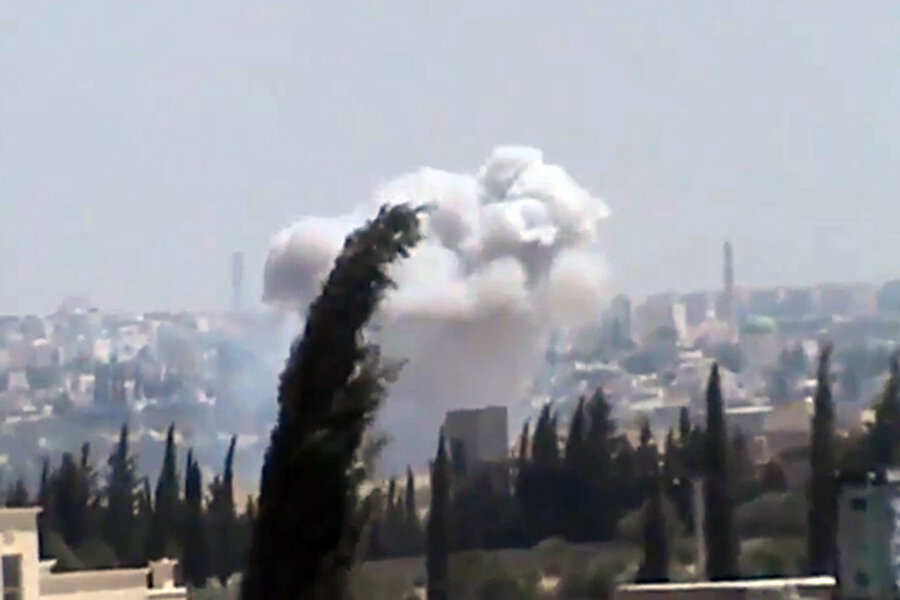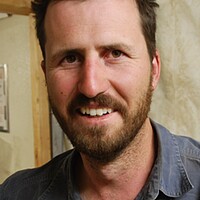What's going on in Syria? A stepped-back look.
Loading...
| Istanbul, Turkey
With at least 1,200 rebel factions, an array of foreign actors backing the regime, and third parties on both sides driven by divergent motives, making sense of the war in Syria has become an overwhelming task.
It is one of the worst humanitarian disasters in decades. The United Nations estimates that the conflict claims as many as 5,000 lives per month, nearly 1 in 3 Syrians are refugees or displaced inside the country, and there are 6.8 million Syrians in need of urgent assistance. Even the most devout newsreader can get lost in the flurry of statistics and layers of conflict.
The key to making sense of the situation in Syria may be focusing less on individual events, such as towns changing hands, and more on overall trends.
“There’s such a flood of information and little pieces of information. It is hard to make sense out of it,” says Jeffrey White, a defense fellow at the Washington Institute for Near East Policy. “It’s really important to look at what’s happening over time and what the underlying dynamics are and see how those are changing, where the trends are going, and how the processes are changing.”
The stagnation of the battle lines makes it particularly difficult to understand who exactly is winning or even has momentum. While rebel and regime forces have traded control of several towns, some more important than others, none are important enough to give either side a clear-cut edge in the conflict, or to substantively change the fronts.
“The two words that really describe Syria today are stalemate and deadlock,” says Fawaz Gerges, director of the Middle East Centre at the London School of Economics. “This is the worst scenario because what political deadlock and military stalemate mean is that it’s turning into a war of attrition, it’s a long war, it’s a costly war. Neither side has the means to deliver a decisive blow. What this means is more casualties, more escalation, and more suffering for the Syrian population.”
Although the US is increasing its involvement, it remains unlikely that it will take any action that could turn the tide of the war. Gen. Martin Dempsey, chairman of the Joint Chiefs of Staff, outlined this week the options for a potential US intervention, but it remains unclear which option the US will pursue, if it pursues any at all. The options ranged from providing arms and training to rebels to an air campaign to eliminate strategic targets inside Syria that would cost billions of dollars. Gen. Dempsey warned that an intervention was likely to have "unintended consequences" and draw the US further into the conflict.
It is clear from inside Syria that neither the fall of President Bashar al-Assad nor the defeat of the opposition are imminent. While the opposition has gained control of large swaths of northern Syria and managed to make the south an active front, the Syrian government appears to be focused on maintaining and solidifying its control of Damascus, Homs, and necessary supply routes.
“If you see gains being made by the opposition, you’ll find that they’re not being made in those areas. They’re being made in other areas … where the regime is not pouring resources in there to hold them at all costs. Whereas around Homs they’ll put resources to fight at all costs and the same in Damascus,” explains Amr Al Azm, an associate professor of Middle East history and anthropology at Shawnee State University in Ohio who describes himself as an active member of the opposition.
If opposition forces made significant progress in Damascus or Homs, or if they managed to lay siege to coastal areas loyal to Mr. Assad, this would be a significant development. If the government launched a major offensive and recaptured large parts of the north, this too would be a game-changing event.
But for now both sides are fighting either to put themselves in a position of power should they sit down at the negotiating table or to be the eventual victor in a prolonged war of attrition. Even if Assad falls in the near future, it remains likely that fighting will continue among an opposition that remains deeply fragmented.
“You’re going to have multiple reversals. Just as the regime has learned and adapted, so too are opposition forces changing, but not in ways that are going to define the headlines,” says Aram Nerguizian, a senior fellow at the Center for Strategic and International Studies.
“I think we’ve reached a point in the Syrian conflict where if you don’t have a resolution in the short-term, and indications are that that’s a remote chance at best, you’re looking at a cycle where what will grab attention will be things like mass displacement, internally displaced persons, refugee pressures, the effect on countries around Syria in terms of how they try to fortify themselves."








